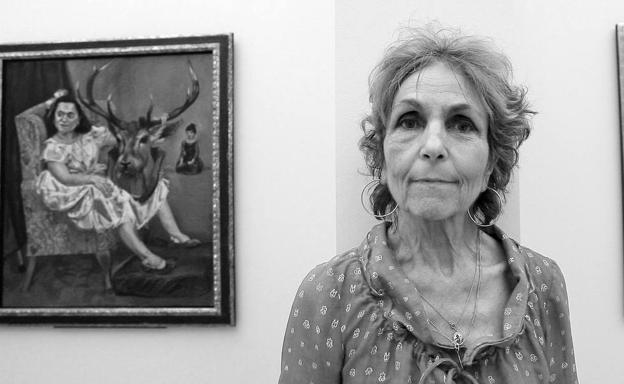Storylines
REVIEW ·
Paula Rego "chez" Picasso in MalagaGEORGINA OLIVER
Friday, 1 July 2022, 18:38
Once upon many moons ago, in Portugal - under Salazar's dictatorial regime - a child with an exceptional gift for artistic expression saw the light of day. A future Commander of the Most Excellent Order of the British Empire (such are the mysteries of destiny), this anglo-lusophone wunderkind was weaned on disquieting folk tales spun by her grandmother.
The success story of recently deceased Dame Paula Rego (Lisbon 1935-London 2022) is as extraordinary as the unsettling narrative thread of her powerful body of work, to be seen at the Museo Picasso Málaga until 21 August. Rego, who considered herself "more of a drawer than a painter" redefined figurative painting.
Family affairs
Paula's electronics engineer/businessman father was a key figure in fashioning his beloved daughter's atypical fate. A fervent anglophile and ardent anti-fascist, he sent her to an Anglican school, as a first step towards extracting her from the inquisitional totalitarian atmosphere of her birthplace. In due course he "exported" her to the UK, where she attended a finishing school in Kent (hence her distinguished King's English accent, peppered with Portuguese intonations) - later encouraging her to study art in London.
"It was l'amour fou," Paula said of fellow artist and future husband Victor Willing, a flighty and flamboyant married man, who was the star attraction at the Slade School of Fine Art. The father of her three children: Caroline aka "Cas", Victoria and Nick Willing, a filmmaker who has produced documentaries about his parents, "Vic" died of MS in 1988, leaving an unfinished œuvre, which set out to depict "inner reality" as a form of reality.
Both Willing and Rego were often referred to as Surrealists. In actual fact, they represented the unconscious purely and simply. Each of them unreeled a stream of consciousness, letting the onlooker into his mind's eye, as opposed to reproducing dreams.
Victor's visions evoked a ballet of sculpture-like constructions (placed against bold abstract backgrounds, much as the highly original nudes he was also known for), while the starting point of Paula's pictures was invariably to "tell a story". In her visual choreographies, she portrayed herself, family members and acquaintances unforgivingly; uncanny characters, bordering on the grotesque, peopled her "goyesque" mindset.
A hint of Lucian Freud? Yes, indeed. Sigmund's grandson taught at the Slade, and young Paula had a word for his approach: "telepathic". The professor moved almost imperceptibly from one student to the next, neither praising nor criticizing. Just looking.
Female eunuch
Abortion (based on personal experience) is a recurrent Rego topic; in July 1998, in the build-up to a first (unsuccessful) abortion rights referendum, held in her native country... this trailblazing feminist embarked on a series of "Abortion Pastels"; these striking images are said to have contributed to the positive outcome of a second plebiscite, held in 2007.
Wrinkles, sagging features. Clasped hands, with prominent knuckles and callouses (from gardening). Paula Rego's unflattering depiction of Germaine Greer, the author of The Female Eunuch - seated on a sofa, sporting her favourite (much-worn) red frock, designed by Jean Muir ("my first proper dress, when I had money...") - is one of the most popular exhibits in the permanent collection of London's National Portrait Gallery. The pose is overtly ungainly, but Greer's vibrant intelligence shines through. "That's the wonderful thing about this picture," says Greer. "The face flickers all the time and what I feel in it is this intelligence beating away behind the face. That's not a mean achievement... To flatter me by making my skin look good, or my tits look good... would be neither here nor there, but to flatter my intelligence in a portrait is just... Peachy...!"
The London connection
The Paula Rego show at Museo Picasso Málaga has been organised by Tate Britain in collaboration with Kunstmuseum Den Haag. The exhibition, which runs until 21 August, is curated by Elena Crippa, Senior Curator, Modern and Contemporary Art, and Zuzana Flašková, Assistant Curator, at the Tate
